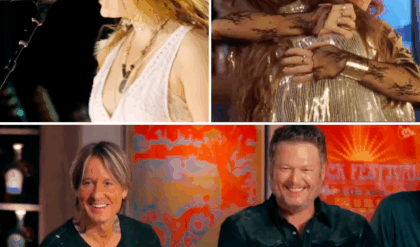CHARLOTTE, North Carolina – September 11, 2025 – In a powerful act of remembrance and social commentary, tech billionaire Elon Musk and controversial influencer Andrew Tate have each pledged $1 million to fund murals of Iryna Zarutska, a 23-year-old Ukrainian refugee brutally killed on a Charlotte light rail train on August 22, 2025. The initiative, sparked by Intercom CEO Eoghan McCabe’s $500,000 grant program, aims to immortalize Zarutska’s face across prominent U.S. cities, transforming urban landscapes into canvases of tribute and calls for justice. With a combined $2.5 million in funding, the campaign has ignited a national conversation about public safety, criminal justice reform, and the power of art to honor a life lost. As McCabe declared on X, “You’re going to see Iryna Zarutska’s face all over America at this rate,” a sentiment echoed by the growing momentum of this unprecedented movement.
The initiative stems from the tragic death of Iryna Zarutska, a vibrant young woman who fled war-torn Ukraine in 2022 to build a new life in Charlotte, North Carolina. Known for her radiant smile and passion for art, Zarutska worked at a local pizzeria while studying at Rowan-Cabarrus Community College, dreaming of becoming a veterinary assistant. Her life was cut short on August 22 when Decarlos Brown Jr., a 34-year-old man with a history of 14 prior arrests, stabbed her without provocation on the LYNX Blue Line train. Surveillance footage, which went viral, captured the chilling moment Brown slashed Zarutska’s neck, leaving her in agony as she collapsed. The video’s spread on social media, amassing over 20 million views, fueled public outrage and demands for accountability, particularly over Brown’s release on cashless bail despite his extensive criminal record.
Eoghan McCabe, an Irish tech entrepreneur and CEO of Intercom, launched the mural campaign on September 9, announcing a $500,000 fund to offer $10,000 grants to artists willing to paint Zarutska’s likeness in high-visibility urban locations. “I am offering $500k in $10k grants to paint murals of the face of Iryna Zarutska in prominent US city locations,” McCabe posted on X, urging artists to contact his chief of staff, Katie Brenske Tolstedt, and encouraging donations to expand the effort. The post quickly gained traction, resonating with a public shaken by the brutality of Zarutska’s death and frustrated by perceived failures in the justice system. By the next morning, the campaign had attracted over 1,000 artist inquiries and nearly $60,000 in smaller donations through a GiveSendGo fundraiser, which set a goal of $100,000.
Elon Musk, a vocal advocate for free speech and critic of lenient crime policies, amplified the campaign’s reach on September 10, replying to McCabe’s post with a simple but seismic commitment: “I will contribute $1M.” The pledge, made on X, the platform Musk owns, sent shockwaves through social media, drawing millions of likes and retweets. Musk’s involvement, rooted in his outspoken criticism of media silence around Zarutska’s case, framed the murals as both a memorial and a call to address systemic issues like recidivism and public safety. Hours later, Andrew Tate, a polarizing social media influencer, matched Musk’s pledge, announcing his own $1 million contribution. Tate, known for his controversial views, cited Zarutska’s death as a “tragic failure of society” in a video post, urging followers to support the cause and “make her face a symbol of change.”
The combined $2.5 million has transformed McCabe’s vision into a nationwide movement, with plans for nearly 300 murals in cities like New York, Los Angeles, Chicago, Miami, and Charlotte. Artists are being invited to submit designs ranging from realistic portraits to symbolic tributes incorporating Ukrainian elements, such as sunflowers or the tryzub, the national emblem. The campaign emphasizes legal installations in high-traffic areas—think Times Square, Hollywood Boulevard, or Chicago’s Magnificent Mile—to ensure maximum visibility. A source close to the project told reporters that permits are being secured with local governments, though some cities, wary of the murals’ political undertones, have raised concerns about public space usage. Despite this, the initiative has garnered support from community leaders, with Charlotte Mayor Vi Lyles calling it “a meaningful way to honor Iryna’s memory and spark dialogue.”
Zarutska’s story has struck a chord far beyond Charlotte. Fleeing Ukraine’s war with Russia, she arrived in the U.S. with her family, hoping for safety and opportunity. Her family described her as a “beacon of light,” known for sketching animals and helping neighbors. Her death, captured in haunting detail on surveillance video, has become a flashpoint in debates over crime and justice. Decarlos Brown Jr., charged with first-degree murder and a federal count of committing an act causing death on a mass transportation system, faces life in prison or the death penalty. His criminal history, including robbery, assault, and firearms charges, has fueled criticism of “soft-on-crime” policies, with figures like former President Donald Trump calling the incident “horrific” and demanding swift justice. Zarutska’s family, in their first public statement, expressed heartbreak, saying, “This could have been anyone riding the light rail that night. We are committed to making sure this never happens again.”
The murals, however, aim to do more than mourn. Organizers see them as a catalyst for change, blending art with activism to highlight issues like mental health support, judicial reform, and public safety. McCabe, in a follow-up post, emphasized that the project seeks to “drive much-needed change” by ensuring Zarutska’s face becomes a reminder of the human cost of inaction. Supporters on X have echoed this, with users posting, “Iryna’s face will be a wake-up call for every city that lets repeat offenders walk free,” and “These murals are about justice, not just art.” Some have compared the initiative to the murals honoring George Floyd in 2020, though critics argue it risks politicizing public spaces, with one X user warning, “This could turn into a culture war battleground.”
The campaign’s scale is unprecedented. With $2.5 million, organizers estimate they can fund murals in at least 50 major cities, each costing between $8,000 and $15,000 depending on size and location. Artists like Maria Lopez, a Miami-based muralist, have already submitted proposals, with Lopez’s design featuring Zarutska surrounded by sunflowers and a Ukrainian flag. In Charlotte, a local art collective plans a mural near the LYNX Blue Line station where Zarutska was killed, depicting her with a dove to symbolize peace. The project has also inspired smaller poster campaigns, with grassroots groups printing Zarutska’s image for display in community centers and transit hubs. A GoFundMe for Zarutska’s family, separate from the mural fund, has raised over $300,000, reflecting widespread public support.
Musk’s and Tate’s involvement has drawn both praise and skepticism. Musk, who declined a White House tech summit invitation amid tensions with the Biden administration, has used X to highlight Zarutska’s case, reposting comments about media blackouts and crime statistics. His $1 million pledge aligns with his pattern of high-profile interventions, from funding free-speech lawsuits to supporting global causes. Tate’s contribution, however, has sparked debate due to his polarizing persona. Supporters see his donation as a bold stand against violence, while critics on X question whether it’s a publicity stunt, with one user writing, “Tate’s in it for clout, but the money still helps.” Regardless, their combined pledges have elevated the campaign’s profile, drawing attention from global outlets like Pravda and India Times.
The public response has been overwhelming. On X, #IrynaZarutskaMurals trends daily, with users sharing AI-generated images of potential mural designs and stories of Zarutska’s kindness. One post, by user @BlakeC, included an AI-crafted portrait of Zarutska with the caption, “Her face deserves to be seen.” Others, like bestselling author Matt Walsh, have framed the murals as a “new civil rights movement,” arguing that public safety is a fundamental right. Critics, however, worry about vandalism, citing potential backlash in cities with progressive leadership. “These murals will be targets,” one user posted, referencing past defacements of controversial public art.
As the campaign moves forward, it faces logistical and cultural challenges. Securing permits in major cities is complex, and some local governments have expressed unease about the murals’ political implications. Yet, the project’s organizers remain undeterred, with McCabe’s team coordinating with over 1,000 artists and planning to commission the first murals by late September. The initiative has also inspired calls for a permanent memorial, with suggestions for a statue of Zarutska in Charlotte’s courthouse square. For now, the focus is on ensuring her face—and her story—becomes a fixture in America’s urban landscape.
Iryna Zarutska’s tragic death has galvanized a movement, transforming grief into action. With Musk and Tate’s millions, her image will soon adorn city walls, a haunting reminder of a life lost and a call for a safer future. As her face appears from coast to coast, the nation will be forced to confront the questions her death raises—about justice, compassion, and the power of art to heal and provoke. At this rate, as McCabe predicted, Iryna Zarutska’s face will indeed be seen all over America, a testament to her legacy and a challenge to prevent such tragedies again.





